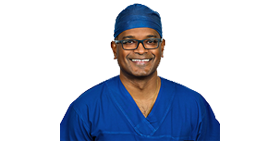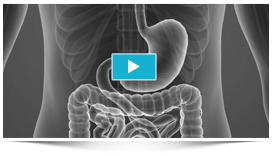Gastro-esophageal Reflux
Gastric reflux, also called gastro-oesophageal reflux disease (GORD), is a condition where the stomach’s contents (food or liquid) rise up from the stomach into the oesophagus, a tube that carries food from the mouth to the stomach. Food mixed with the stomach’s digestive acids can irritate and damage the oesophagus. It can also cause symptoms outside the oesophagus such as cough, wheeze, recurrent chest infection. Damage may occur to other organs including teeth.
Normally, the stomach’s contents are retained in the stomach with the help of the lower oesophageal sphincter (LES), a muscle that contracts and relaxes to maintain the one-way movement of food. However, gastric reflux occurs when the LES weakens or abnormally relaxes. The exact cause of this is not known, however certain factors including haital hernia , obesity, smoking, pregnancy and possibly alcohol, may contribute to GORD. Common foods such as spicy foods, onions, chocolates, caffeine containing drinks, mint flavourings, tomato-based foods, citrus fruits and certain medications can worsen gastric reflux.
Heartburn is usually the main symptom of GORD, characterised by a burning-type pain in the lower part of the mid-chest, behind the breast bone. Other symptoms include a bitter or sour taste in the mouth, trouble swallowing, nausea, dry cough or wheezing, regurgitation of food (bringing food back up into the mouth), hoarseness or change in voice and chest pain.
Your doctor may order some of the following tests to diagnose gastric reflux:
- Endoscopy: allows the doctor to examine the inside of your oesophagus, stomach and portions of the intestine with an instrument called an endoscope, a thin flexible lighted tube
- Twenty four-hour pH monitoring: involves inserting a tube through your nose into the oesophagus, and positioning it above the LES. The tip of the tube contains a sensor which can measure the pH of the acid content refluxed into the oesophagus. The tube will be left in place for 24 hours.
- pH capsule: allows measuring acid exposure in the oesophagus. A small wireless capsule is introduced into the oesophagus by a tube through the nose or mouth. The tube is removed after the capsule is attached to the lining of the oesophagus. The pH sensor transmits signals to a computer which collects the data about the acid exposure over the next24 hours. The capsule eventually falls off of the oesophagus lining and is safely passed in the stool.
Treatment aims at reducing reflux, relieving symptoms and preventing damage to the oesophagus. Some of the treatment options include:
- Antacids: over-the-counter medicines that provide temporary relief to heartburn and indigestion by neutralizing acid in the stomach
- Other medications: reduce the production of acid in the stomach
- Keyhole day case surgery such as fundoplication: is a surgical procedure in which the upper part of the stomach is wrapped around the end of your oesophagus and oesophageal sphincter, where it is sutured into place. This surgery strengthens the sphincter and helps prevent stomach acid and food from flowing back into the oesophagus. This can be done as a day procedure using keyhole surgery and robotic surgery. This may allow you to stay off your medications and be reflux free
PATIENTS SUITABLE FOR KEYHOLE OR ROBOTIC SURGERY
- Those not wanting to take life time medication
- Having symptoms of reflux and not controlled on medication
- Those with complications of reflux not controlled on medication
- Those with Volume reflux: ie having fluid and food reaching their mouth





